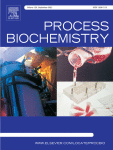Ver ítem
- xmlui.general.dspace_homeCentros Regionales y EEAsCentro Regional Mendoza - San JuanEEA San JuanArtículos científicosxmlui.ArtifactBrowser.ItemViewer.trail
- Inicio
- Centros Regionales y EEAs
- Centro Regional Mendoza - San Juan
- EEA San Juan
- Artículos científicos
- Ver ítem
Influence of olive mill waste phenolic compounds levels on carotenoid production by Rhodotorula spp.
Resumen
Olive oil production using the two-phase extraction system generates large amounts of biomass named alperujo, which has high percentage of water, slightly acidic pH, and high concentration of salts, organic matter, and phenolic compounds. Due to the presence of these components, alperujo is a significant source of environmental pollution, hindering the disposal of this waste. Nevertheless, some phenolic compounds such as tyrosol and hydroxytyrosol, have
[ver mas...]
Olive oil production using the two-phase extraction system generates large amounts of biomass named alperujo, which has high percentage of water, slightly acidic pH, and high concentration of salts, organic matter, and phenolic compounds. Due to the presence of these components, alperujo is a significant source of environmental pollution, hindering the disposal of this waste. Nevertheless, some phenolic compounds such as tyrosol and hydroxytyrosol, have high nutraceutical and antioxidant power and could have potential applications in the food, pharmaceutical and cosmetic industries. This work aimed to evaluate the ability of different alperujoderived
media, with different levels of phenolic compounds, to sustain the growth and carotenoid production by yeasts from Rhodotorula genera (R. mucilaginosa LPSC 638, R. glutinis Y54, and R. graminis Y52), as well as to prospect the biotechnological production of carotenoids in these media. The yeasts grew and produced carotenoids in all media, although growth was better in dephenolized media. The highest amount of carotenoids (43.0 ± 3.1 mg/g dry yeast) was obtained with R. glutinis Y54 grown in a thermally treated and dephenolized medium. Our study represents a novel approach to valorize alperujo with a dual benefit, the recovery of valuable compounds, i. e. phenolic compounds, and the bioproduction of new ones, i.e. carotenoids.
[Cerrar]

Autor
Ghilardi, Carolina;
Sanmartín Negrete, Paola;
Rodríguez Gutiérrez, Guillermo;
Monetta, Pablo Miguel;
Arroyo López, Francisco Noé;
Hornero Méndez, Dámaso;
Carelli, Amalia Antonia;
Borroni, Virginia;
Fuente
Process Biochemistry 120 : 275-286. (September 2022)
Fecha
2022-06-16
Editorial
Elsevier
ISSN
1359-5113
Formato
pdf
Tipo de documento
artículo
Palabras Claves
Derechos de acceso
Restringido
 Excepto donde se diga explicitamente, este item se publica bajo la siguiente descripción: Creative Commons Attribution-NonCommercial-ShareAlike 2.5 Unported (CC BY-NC-SA 2.5)
Excepto donde se diga explicitamente, este item se publica bajo la siguiente descripción: Creative Commons Attribution-NonCommercial-ShareAlike 2.5 Unported (CC BY-NC-SA 2.5)

